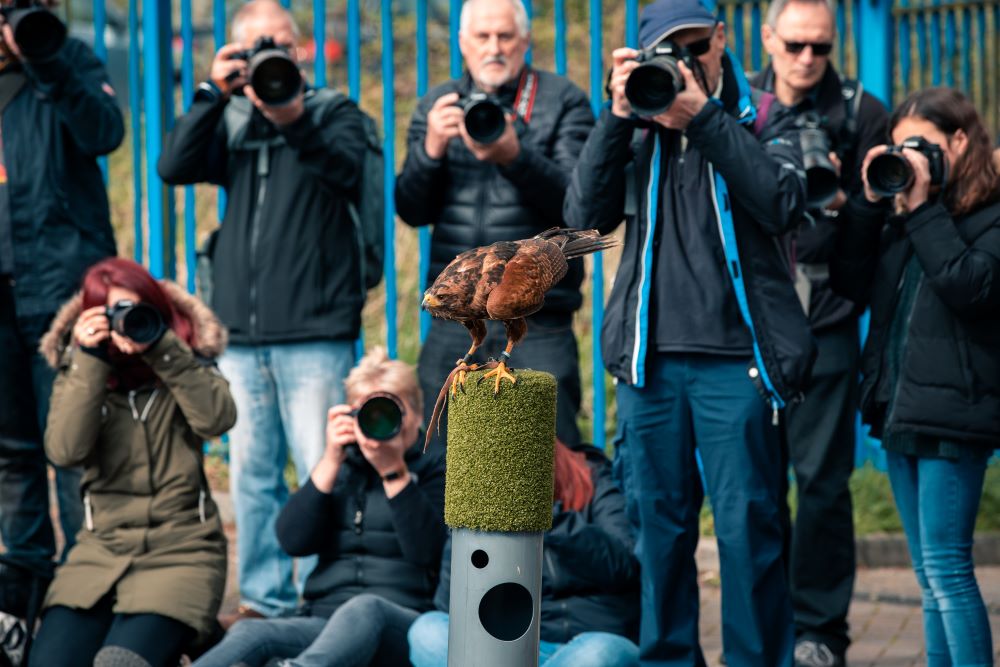- Call us: 01444 237070
- Contact Us
- Stores
- Sign In / Register
- Black Friday Deals
-
- Back
- Used Cameras
- Used Accessories
- Used Lenses
- Used Video
- Used Film Equipment
- Used Stock Alert
- Used Blank Test
- Sell or Part Exchange
- All Used Black Friday Deals
- Used Clearance
- Recently Added Used Equipment
- Park Picks
- Faulty
- Trade-In
- Blog
- New in
- Call us
- Contact us
- Stores
- Sign in
- Categories
- Tips & Inspiration
- Reviews
- News
- Events
- Features
- Buying Guides
- Competitions
What do You Need for Wildlife Photography
Wildlife photography is one of the most immersive ways to produce stunning images whilst getting as close to nature as possible. It’s a genre that often converts those who are enthusiastic about the natural world into fully-fledged photographers, and it’s no wonder that through this the style has become highly technical.
The genre requires your equipment to perform at its peak in challenging conditions. It rewards cameras with innovative specs, and lenses that combine outrageous range with elite image quality. Due to its outdoorsy nature, wildlife photography requires the approach of a serious backpacker, too. You’ll need your outdoor photography equipment to be light and resistant to the conditions you may find yourself in.
In this article, we’ll discuss the essential tools for wildlife photographers – helping you choose a camera and lens, then moving from there – and additional things that will make your life much easier on your shoots. If you’re looking to discover what you need for wildlife photography, then keep reading to find out.
Cameras
The first place to start when building a photography kit has to be your camera, as it’s the core of the equipment around which you build your bag. Certain features of a modern mirrorless camera are more favourable to certain genres of photography, and wildlife photography is no exception. There are many specs to look out for that could dictate your choice of camera.
Autofocus is essential for a good wildlife system, with your subjects constantly moving. Although autofocus performance is mostly judged by anecdotal evidence, it’s important to look for features like subject detection modes and new deep-learning autofocus technology. Wildlife is unlikely to stay still for long and to leave with good shots before your subject does, fast autofocus is essential.
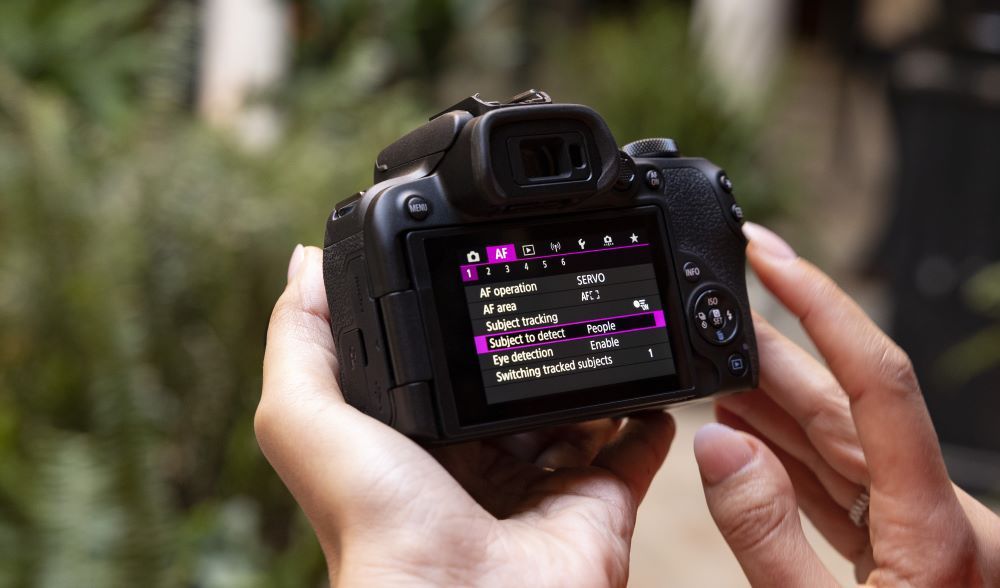
Wildlife photography is, more than anything, about taking your chances. By having a camera that’s fast and reliable, you’ll be able to capture those fleeting moments much more often. Therefore, there’s a strong focus on continuous shooting speeds in wildlife cameras. The best digital cameras for wildlife lean into this with a lot, like the Sony A9 III with an outrageous 120fps burst even while using continuous, AI-powered autofocus.
Choosing your sensor size is quite important. For most digital photography, a full-frame camera seems the obvious choice for those who can afford the system. However, this isn’t immediately the case for wildlife photography – cropped sensor formats like APS-C and Micro Four-Thirds extend the range of lenses due to their crop factor, getting you closer to the action. The Canon EOS R7 and the OM System OM-1 II make the most of their respective sensor sizes and easily rival full-frame alternatives.
Image stabilisation is another helpful aspect of a digital camera. Having the freedom to shoot wildlife handheld means tracking your subject is much simpler, and reduces your reliance on a tripod. Since the lenses involved are relatively heavy, it also makes them harder to hold still without it, and simply streamlines your process when out shooting.
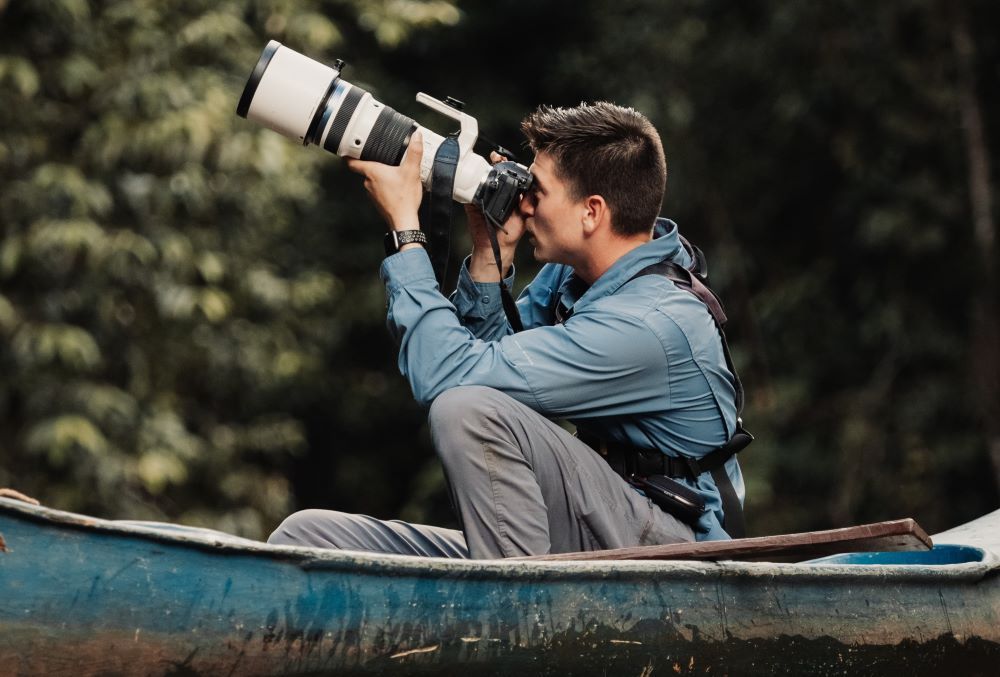
Lenses
Wildlife photography lenses are stereotypically large and bulky. In truth, they must be – the best wildlife camera lens gets you as close to the action as possible and keeps a comfortable distance from skittish animals. You’ll need a substantially large focal length to make up the difference, and this requires an equally large, powerful lens.
Prime lenses can be a cost-effective way to achieve this range. For closer wildlife, a 300mm lens is ideal, while a super-telephoto beyond 400mm is perfect for many subjects. Longer lenses are limited in the amount of light they can let in, so the maximum aperture available isn’t as high and you’re limited in how much depth of field you can access. Their image quality stands out too, as the lack of a zoom mechanism provides more room to incorporate premium optics.

While the best super-telephoto primes are some of the most expensive lenses on the market (take the incredible Canon RF 800mm f/5.6 L for instance), affordable options are available, like the Canon RF 800mm and 600mm f/11 IS STM lenses. These two lenses are the lightest of their kind on the market, and feature retractable designs to make them extremely portable.
The versatile choice instead would be to bring a zoom lens on your shoots. While more expensive, and a little bit heavier too, being able to vary your focal length is priceless and increases that crucial ratio of hits to misses when out shooting wildlife photos. For professional work, your focal range will be limited to around ~200mm, but that will help to preserve pristine image quality throughout the focal range.
If you’re on a budget, lenses with greater zoom range and potentially less depth of field will be the perfect entry point when shooting distant subjects. New all-in-one options like the Nikon Z 28-400mm F/4-8 VR and the Tamron 50-400mm F/4.5-6.3 Di III VC VXD are outrageously cheap for the versatility they provide. They’re no-brainers for those simply enthusiastic about wildlife, who can make peace with sacrificing a bit of corner-to-corner sharpness.
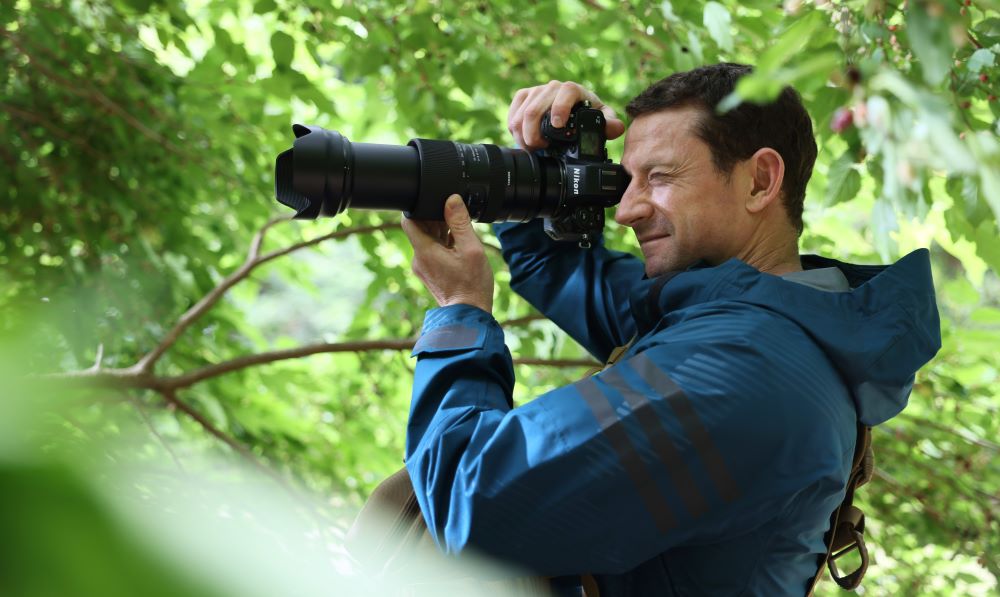
Teleconverters
Teleconverters are another crucial part of your wildlife photography kit. Anyone acquainted with shooting wildlife will know the long-range lenses required are a hefty investment. Therefore, teleconverters significantly assist your wildlife photography without breaking the bank.
When mounted between your camera body and your lens, a teleconverter will magnify the output of your lens. They’re usually found in two standards – 1.4x and 2x magnification – and for your system, they’re a one-size-fits-all tool for you to use virtually all of your wildlife lenses with.
Unfortunately, teleconverters are not magic. They slightly reduce the amount of light that hits the sensor as a product of their magnification. A 1.4x teleconverter results in one stop of light loss, and a 2x teleconverter loses two stops. This means that the maximum aperture of your lens is restricted, and you may lose some depth of field.
Ultimately, however, the aim of a teleconverter is simply to increase the range of your lens when shooting distant subjects, and it does that very well. The light lost is a compromise worth making for almost all wildlife photographers – even those with the longest of lenses.
Tripods
Tripods are an important part of your kit while shooting wildlife. Interestingly, wildlife photography doesn’t necessarily require a tripod to circumvent camera shake, as you’re likely shooting at fast shutter speeds to freeze your subject's motion. Rather, it allows you to work with the largest, most powerful lenses on the market which can be quite a struggle to use handheld.

A carbon fibre tripod would be the best tripod for wildlife photography. The material means they’re far lighter than their aluminium counterparts, which is crucial when photographing wildlife. The tripod's stability is unlikely to be compromised, as in the worst conditions most tripods allow you to attach weights (your camera bag, for instance) onto the centre column, holding it down.
Premium options like the Peak Design Travel Tripod have perfect ergonomics, quick leg deployment, weather protection and impact resistance. Popular brands like 3 Legged Thing have dedicated wildlife tripods, like the Winston 2.0 Carbon Fibre Tripod with interchangeable tripod feet to combat challenging terrain.
Because using a tripod to support the weight of your lens is a large factor, ball tripod heads are a favourite of wildlife photographers. Having a comfortable range of motion while using your camera with a tripod is vital when tracking moving subjects like birds. In addition, a ball head tripod will invariably allow you to adjust its stiffness, meaning you can control your camera however you feel comfortable.
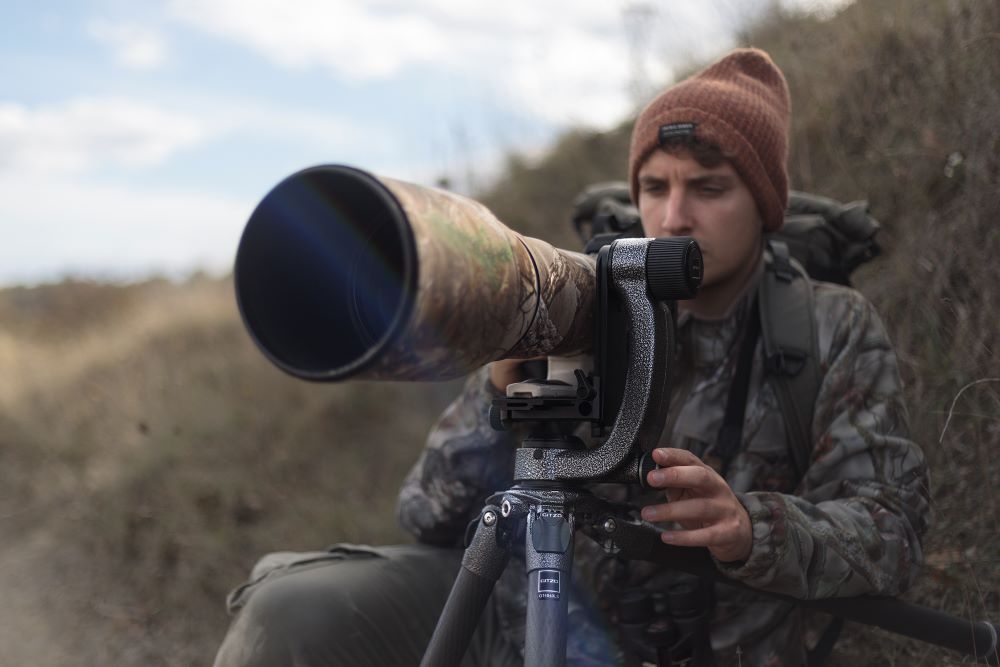
Camera bags
With the amount of equipment you’re likely to be carrying on wildlife shoots, you’ll need to bring a rather large camera bag with you. Fortunately, the best camera bags are designed to take some of the weight off your back and shoulders, as they understand you’re likely to be doing some serious travel with your gear.
Arguably the best camera bags for wildlife allow you to access the main compartment from where the bag meets your back. This simple feature goes a long way – when putting your bag down on the ground in outdoor conditions, the part that touches your back will stay clean. Most good wildlife photography bags will be resistant to rain; however, those that aren’t are likely to have a high-quality rain cover available.
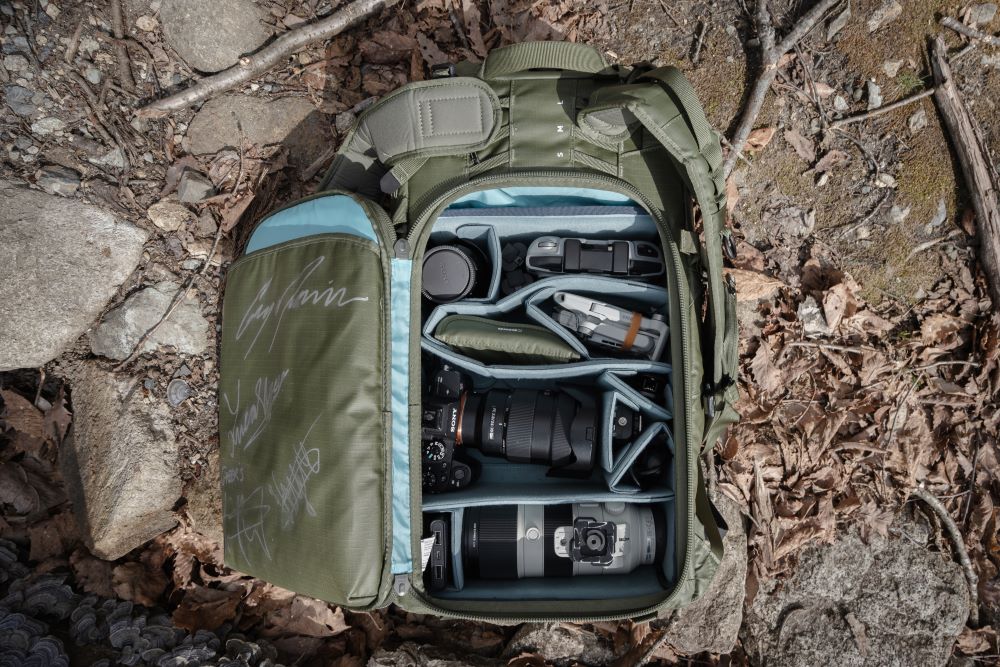
The Shimoda Explore V2 35 is a good example of the features wildlife photography demands. While quite large, the chest and waist belts mean the weight of this camera backpack is distributed across your body, so huge payloads feel light. The straps also adjust for larger and smaller bodies to maintain a comfortable fit. It’s also water-resistant and comes in an army green colourway to stay discreet in the wilderness.
The larger Vanguard VEO Active 53 offers 45 litres of versatile storage, room for 6-7 camera lenses and extra pockets for additional accessories. Straps on the exterior of the bag allow you to attach a tripod on both the rear and the side, and the back is strategically padded to provide comfort in the right places.
Rain covers
A camera rain cover is something that you’d rather have and not need than need and not have. While a large amount of modern digital cameras are weather-sealed, it’s still a luxury to have your camera and lens protected from an unexpected downpour.
Some waterproof covers like the Canon ERC-R5L Large Rain Cover are from the camera brands themselves, enabling stylish protection, but most come from third-party brands like ThinkTank. The latter’s choices include an Emergency Rain Cover in a range of sizes, and the more versatile Hydrophobia rain cover with two sleeves on either side for controlling your camera.
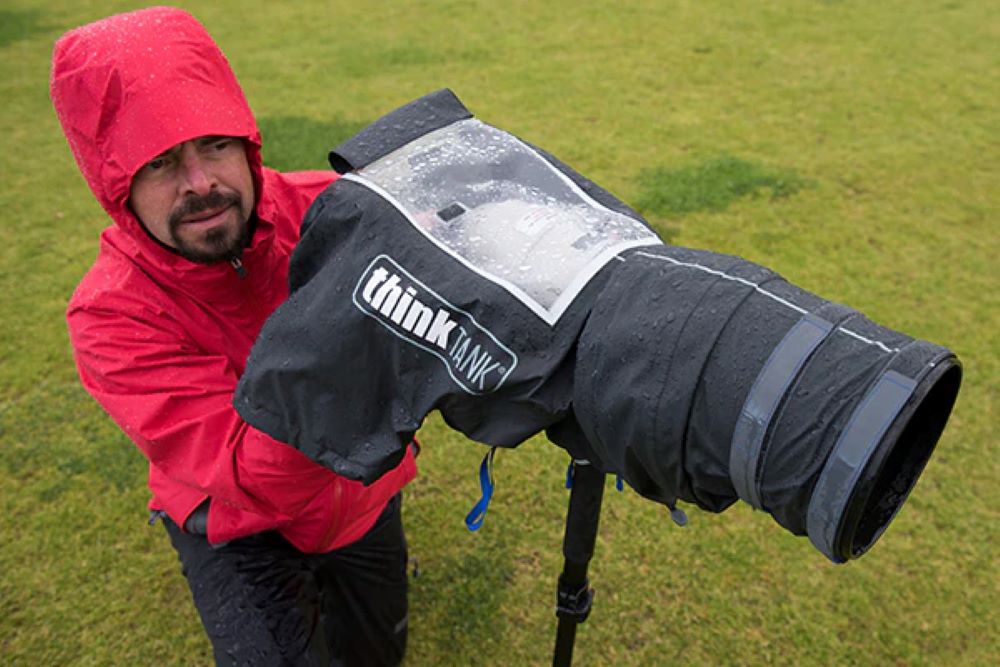
Binoculars and Spotting Scopes
If you’re more into wildlife than the photography in wildlife photography, then investing in some nature observation equipment might be worth your while, and make your shoots much more enriching. Not only this but if your subject is an elusive one, then it can increase the likelihood that you’ll walk away with the shots you were hoping for.
Binoculars are the obvious starting point for nature observation. More premium options from renowned names like ZEISS and Swarovski are for the most serious of nature enthusiasts, producing the best binoculars for bird watching and more. However, if you’re just trying to scope out subjects then options from Nikon, Hawke and Opticron are more than enough to spot wildlife from miles away.
If you need a greater magnification, a spotting scope could be for you. While not the most portable pieces of equipment, they give enthusiasts a far better perspective on wildlife. There’s also been an uptick in users embracing spotting scopes for digiscoping, which has resulted in much more portable, user-friendly scopes being produced.
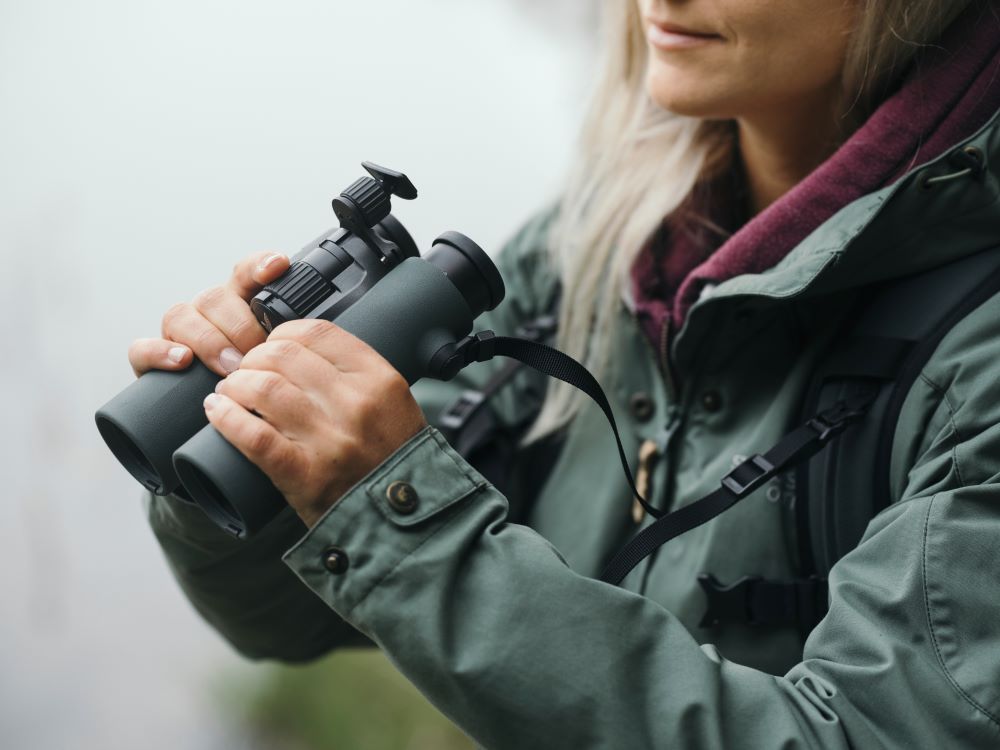
Thermal Imaging Cameras
For the most devoted wildlife enthusiasts out there, there are plenty of tools available to extend their perspective on nature and assist with their wildlife photography too. Thermal imaging scopes are a great way to extend your nature observation regardless of lighting or distance.
Thermal cameras are fascinating - whether simply curious about your local wildlife or using one to scope out subjects, they provide you with a perspective that’s impossible to achieve any other way. Handheld thermal cameras are equipped with infrared sensors which detect the heat signature of distant wildlife – this is incredibly handy for nature photography as it enables you to spot subjects from miles out, with clarity even in darkness.
ZEISS has recently extended their reputation of optical quality into thermal imaging cameras with its DTI range. The ZEISS DTI 1 is a good thermal monocular for beginners, whereas those more dedicated may look to the ZEISS DTI 3 Gen 2 or the DTI 6, and if range is a necessity, the ZEISS DTI 4 exceeds 2.6km of range. Steiner and Pulsar are equally popular thermal imaging camera brands, with the latter producing both thermal binoculars and monoculars.
Trail Cameras
Another unique tool for observing wildlife, trail cameras are the best way to produce candid animal photos. They’re a true wildlife buff’s choice as they offer a glimpse into wildlife by taking photos when triggered by motion, and broadcast them directly to your devices.
ZEISS trail cameras are a popular choice, after their collaboration with the tried-and-tested Secacam range. Both the ZEISS Secacam 5 and Secacam 7 offer convenient installation, 4G image transfer and additional tools like AI recolouring of infrared camera images. The newest addition, the ZEISS Secacam 5 Wide Angle, offers a 100° field of view.
The premium Bushnell 32MP Dual Core DS 4K No Glow Trail Camera offers the best image quality during both day and night, capturing amazing images with dual sensors. The best trail camera for versatility has to be the Spypoint Link Micro-S, with a built-in solar panel and cellular antenna for superior longevity and durability. WildCamera have some brilliant options for budget-conscious enthusiasts, like the powerful WildCamera EZ2 Camouflage Elite.
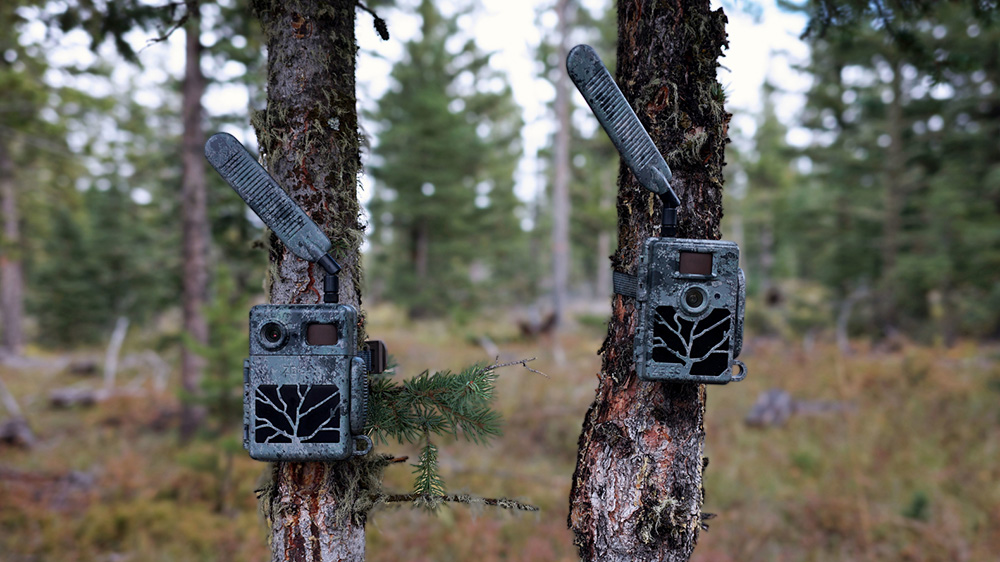
Conclusion
We hope this article has provided a comprehensive look at all that’s available to perfect your wildlife photography experience. While this article focuses on gear to help you in the great outdoors, there’s a variety of additional tools which will streamline your process across the board – explore our range of photography accessories to truly complete your camera bag.
If you’re interested in wildlife, Park Cameras’ biannual Wildlife Day brings a host of talks, brand specialists and even a birds-of-prey display to our Burgess Hill storefront, along with exclusive one-day-only offers. Make sure to save the date!
Park Cameras is a leading UK provider of all things photography – discover our range of digital cameras, lenses and more today, along with our exclusive range of photography offers while they last.
Share this post:
By Thom Pyle on 18/09/2024

Trade in your old equipment
Fast and easy trade in service ensures your old gear is collected efficiently and you are paid quickly! It's very simple to trade in your unwanted photography gear. Just head over to our dedicated Sell or Part Exchange page, fill out the details, and we'll get back to you with an offer for your old gear. Take the cash, or put it towards the cost of your new gear. It's up to you! Find out more
sign up to the newsletter
Keep up to date on the latest photography news, events and offers. Sign up now
